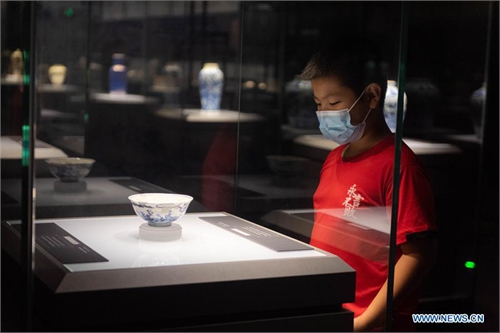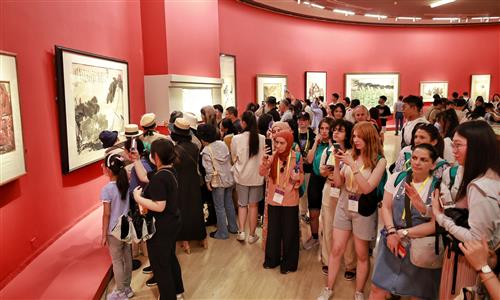ARTS / CULTURE & LEISURE
Digital exhibition at Hunan Museum explores ways to promote China’s traditional culture
Digital exhibition promotes China’s traditional culture
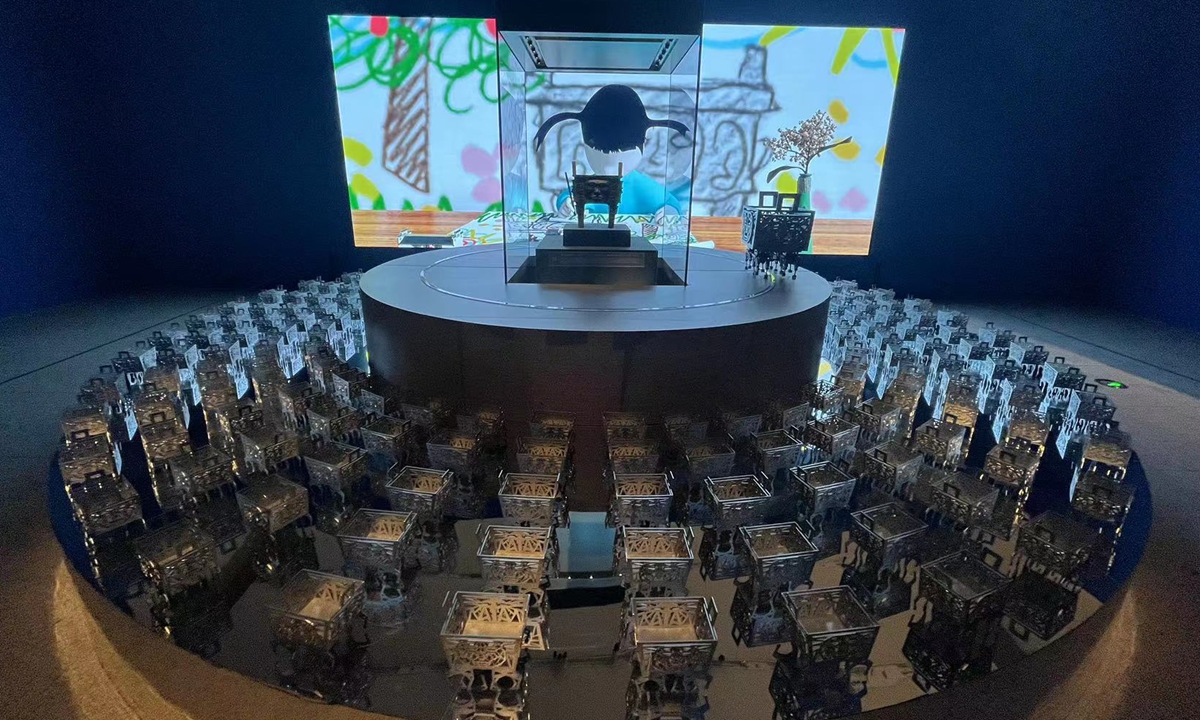
Photo: Xu Liuliu/Global Times
The Da He Bronze Ding (food vessel) with Human-mask Design and the Boar-shaped Bronze Zun (wine vessel) from the Shang dynasty (c.1600BC-1046BC), the printed and painted floss silk padded gauze robe, a T-shaped painting on silk from Xin Zhui's tomb and a plain unlined gauze gown from the Han Dynasty (206BC-AD220). These five national treasures collected by the Hunan Museum in Changsha, Central China's Hunan Province, are being interpreted through modern new expressions at the museum's new exhibition Wandering: Digital Art in Historical Spacetime.
Inspired by these five national treasures, six groups of digital artists let their imaginations run free as they used digital art to carry out dialogues across time and space, and pay tribute to China's excellent traditional culture. Nine artists chose to have a dialogue with works of ancient Chinese art history, using digital art to present the rebirth of classic civilization, while 12 artists sought to integrate time, space, culture, and media from the vast reaches of foreign art history, as well as produce positive responses toward AI.
The mixed exhibition combines traditional cultural relics, digital art, and installation art together. "It marks our first attempt to have a dialogue between ancient and modern times and explore ways to promote China's fine traditional arts through innovative means," said Duan Xiaoming, president of the Hunan Museum and also one of the exhibition's curators, in an interview with the Global Times.
The exhibition seeks to explore how fine traditional Chinese culture, carried by ancient cultural relics, can better connect with contemporary society and people. After over a year of planning and preparation, artists from China and overseas present a rich and inclusive exhibition "that audiences of different ages and from multicultural backgrounds can find fun and obtain a pleasant cultural experience," Duan noted.
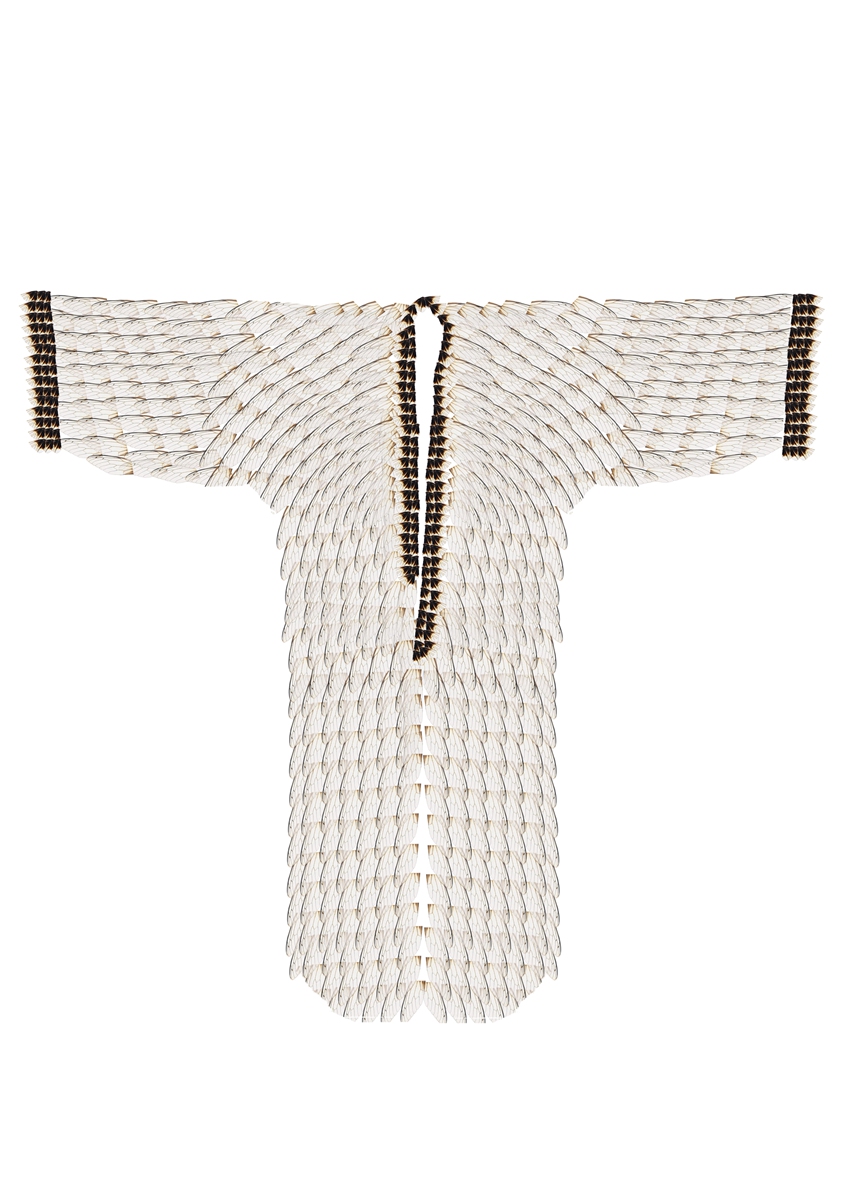
Photo: Xu Liuliu/Global Times
Described as being as "thin as a cicada wing" and as "light as smoke," two plain unlined gauze gowns favored by Xin Zhui, the marquise of Dai, are evidence of the astonishing silk-weaving skills of the Han Dynasty, which shocked the world as one gown only weights 49 grams.Inspired by these gowns, Chinese artist Zhou Wenjing created Light as Clouds, Thin as Cicada Wings, a work consisting of two parts. The first part is composed of real cicada wings, symbolizing the interplay between life, death and nothingness that creates genuine beauty. The second part is a digital art animation that aims to discover the essence of the gowns' delicate and light nature.
Artist Lin Jiun-ting from the island of Taiwan, who now lives in Shanghai, brings to the exhibition his understanding of the traditional Chinese landscape paintings that have been favored by Chinese scholars and intellectuals. In Ring, he explores the unique aesthetic interests and spiritual solace he found in Chinese culture through videos, projections and interactive devices.
"Having lived in the Chinese mainland for years, I have been working to explore the essence of Chinese traditional art through new and creative expressions, to allow more and more people to get to know the fine cultural relics from our ancestors," he told the Global Times.
French artist Tony Brown said he was impressed by local people's enthusiasm for fine traditional Chinese art while participating in the exhibition, where his latest installation work, Two Birds in the Tree, is also on display.
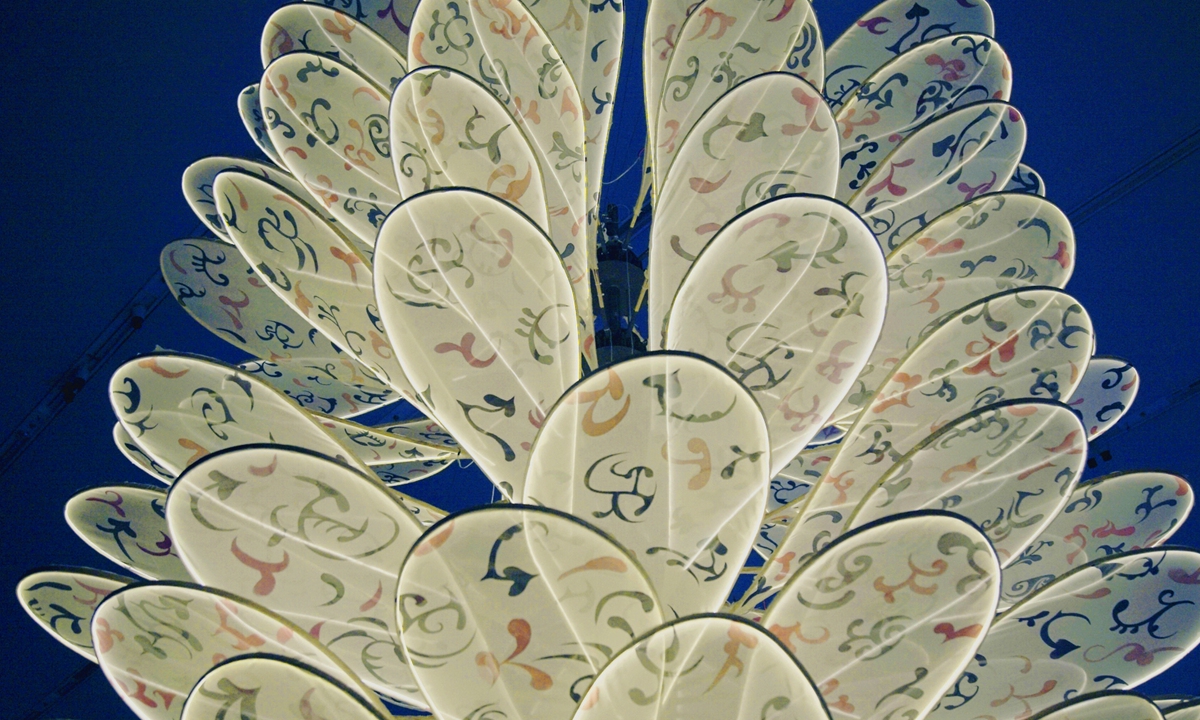
Photo: Xu Liuliu/Global Times
Standing in front of the museum and seeing so many visitors queuing outside reminded him of how, 20 years ago, he used to walk past the Louvre in Paris on his way to the Liberal Arts College of Paris."Similar to today's scene of so many people lining up outside in the hopes of seeing the art treasures of human beings, that old feeling is back. It is amazing, it is great to be at such a lovely place," he said.
In his eyes, the Hunan Museum is doing something innovative by placing ancient treasures and new digital art pieces in the same place, which he believes "is a challenging but meaningful move."
"Each cultural relic is unique as knowledge of it can vary from person to person," said Duan, the museum's head.
"We can't assign people knowledge; we can only offer them more opportunities, such as digital art and innovative forms of expression, to help them form their own understanding of art. The exhibition is a big step forward in making art alive and approachable, rather than simply displaying these treasures behind glass," Duan said.

